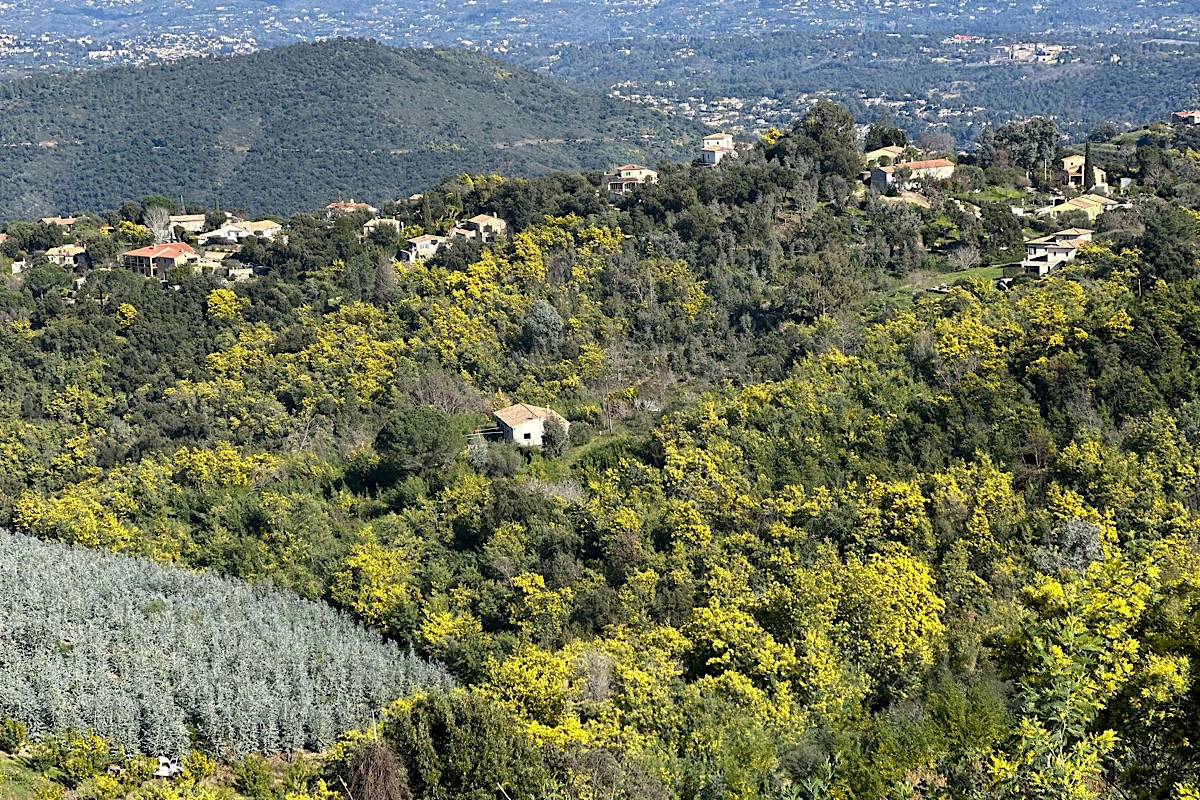February in the Côte d’Azur brings a dazzling display of golden mimosa, but for allergy sufferers, it also signals the start of a challenging season.
Covering the hills of Tanneron, the Croix des Gardes massif and beyond, the bright yellow flowers of the mimosa tree, or the Acacia dealbata to give it its scientific name, fill the air with their distinctive fragrance at this time of the year.
The Massif de Tanneron, home to the largest mimosa forest in Europe, provides stunning views over Mandelieu-La Napoule and the Mediterranean Sea. The nearby Croix des Gardes nature reserve in Cannes offers a variety of hiking trails through its mimosa-covered hills. There’s also the Route du Mimosa, a 130-kilometre scenic drive stretching from Bormes-les-Mimosas to Grasse, which is dedicated to the region’s iconic flower and offers numerous stops for those wanting to immerse themselves in the golden bloom.
A protected resource
Mimosa farming is the primary economic activity in Tanneron, a Var commune where the flower, native to southeastern Australia, has been cultivated for over a century alongside eucalyptus.
A longstanding municipal decree prohibits the public from harvesting mimosa, whether growing wild or in cultivated fields, with a fine of €35 for those caught, yet many still choose to flout these rules. Visitors to the area can often be seen collecting branches from roadsides, the forests and even local farms, and the authorities have decided to increase surveillance on the Massif de Tanneron in 2025, with police patrols, gendarmerie reservists and cameras now monitoring the area. Farmers, too, have reportedly taken action by setting up communal WhatsApp groups to report suspicious activity.
Their message is clear: mimosa belongs to someone, whether private property or the commune, and taking even a small branch is theft.
Not a bloom for everyone
While mimosa is a highlight of the winter season in the Côte d’Azur, it is also a major trigger for seasonal allergies. This year, France is experiencing a severe pollen alert, with much of the country currently under ‘red’ risk.
The PACA region and Monaco are among the most affected areas, as pollen from mimosa, along with cypress, juniper and ash, are widespread, causing symptoms such as itchy eyes, runny noses and respiratory discomfort to those with allergies. The National Aerobiological Surveillance Network (RNSA) warns that recent mild and windy weather has intensified the spread of pollen, making conditions especially difficult for sufferers.
Experts recommend limiting time outdoors for those with allergies during peak pollen spread, as well as rinsing hair and changing clothes after exposure, and wearing sunglasses or masks to reduce irritation. For those with severe allergies, sticking to prescribed treatments is essential during this high-pollen season.
But for those unaffected by allergies, the mimosa season offers breathtaking landscapes. It is also an undeniably beautiful signal that spring is on its way at last.
Check out a Monaco Life reel of the 2024 mimosa season below:
View this post on Instagram
Monaco Life is produced by real multi-media journalists writing original content. See more in our free newsletter, follow our Podcasts on Spotify, and check us out on Threads, Facebook, Instagram, LinkedIn and Tik Tok.
Photo by Monaco Life
